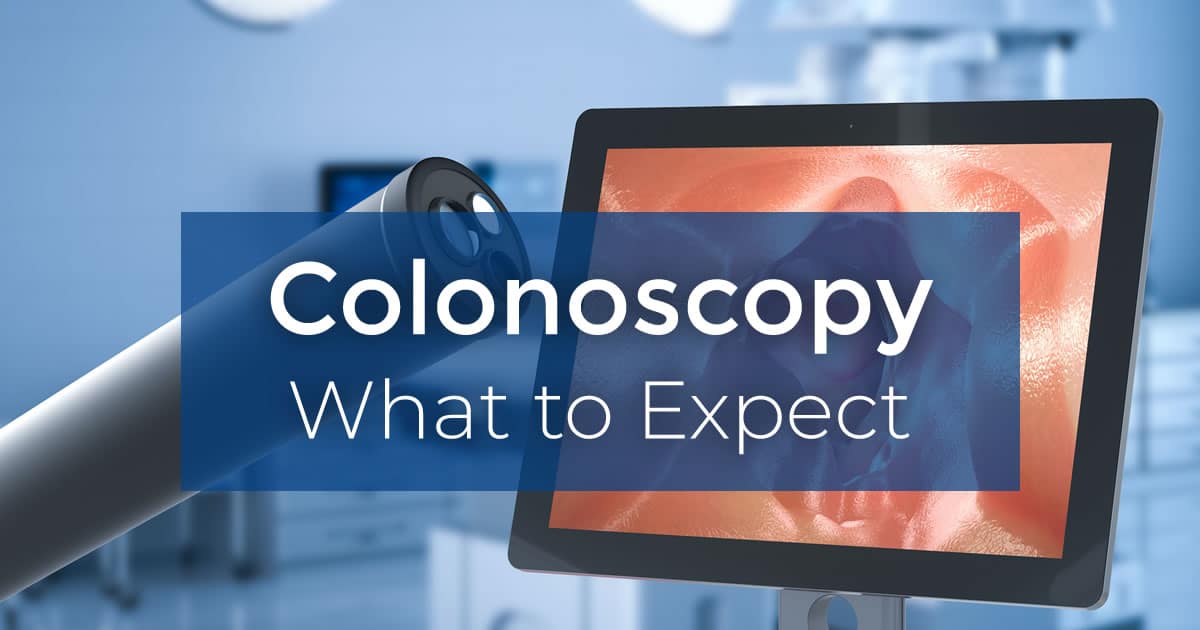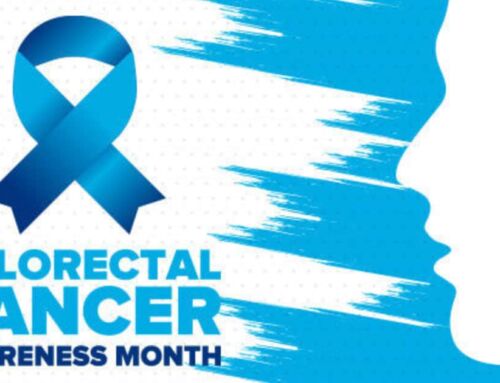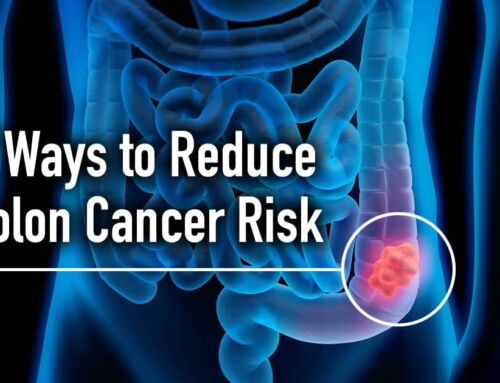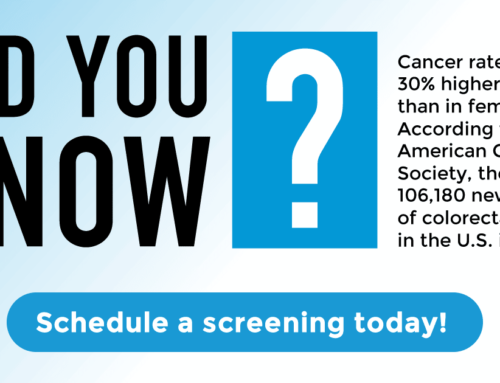Most people experience some anxiety before getting a colonoscopy. They may have heard horror stories about the bowel prep. They may feel embarrassed about the procedure or simply fearful of the unknown.
These feelings are entirely normal. But learning more about the procedure and what to expect can help put some of your concerns to rest.
The technique and sedation used during a colonoscopy vary between patients and doctors. Making sure you see a qualified gastroenterologist can help give you peace of mind.
This article will clarify what occurs before, during, and after a colonoscopy. We hope to show that this procedure is often much easier than you think.
Colonoscopy Scheduling Options
There are two options for scheduling your colonoscopy. Depending on your personal preferences and medical history, you can schedule an open access colonoscopy or office visit colonoscopy.
Open Access Colonoscopy
An open access colonoscopy is a colonoscopy that doesn’t require an office visit before the day of your procedure for screening colonoscopy patients. This saves you both time and copay expenses by eliminating an additional trip to the facility. We offer this scheduling option to make colonoscopies more affordable and accessible and increase colon cancer screening rates in San Antonio.
To schedule an open access colonoscopy, you can call our office and exchange all information over the phone or request a colonoscopy through my website, and we will reach out to you.
Office Visit Colonoscopy
Scheduling an office visit colonoscopy means that you will have an office visit before the day of your procedure. This may be necessary if you’re experiencing new digestive symptoms such as abdominal pain, diarrhea, or blood in the stool.
A colonoscopy can diagnose conditions such as:
- Ulcerative colitis
- Crohn’s disease
- Diverticular disease
- Colon cancer
- Colon polyps
Colonoscopy Preparation
The colonoscopy prep is the worst part of this procedure. While it isn’t the most pleasant experience, it’s only a few hours, and it’s incredibly important. I’ve gone through it a few times myself, and it’s really not that bad.
Having a clean colon will improve your doctor’s ability to detect existing polyps. It will also increase the safety, diagnostic accuracy, and speed of the procedure. If you don’t follow the preparation instructions, your doctor won’t be able to perform a thorough examination. This means you may need to re-do the procedure in one year.
Your colonoscopy preparation begins with a clear liquid diet the day before your procedure. A clear liquid diet softens your stools to make them easier to pass. During this diet, you can only consume easily digestible liquids that you can see through. You should avoid dairy and dark-colored liquids with red, purple, and blue dye.
The following foods are okay to consume on a clear liquid diet:
- Clear juices without pulp
- Clear soda
- Chicken or beef broth
- Popsicles
- Jell-O
- Tea
- Coffee without creamer
On the evening before your procedure, you’ll start to drink the laxative prep. This will clean out your colon. There are many different prep brands, but they all do the same thing. Our office will give you specific instructions on how to take the prep.
We offer the following laxative preparations:
- EZ2GO (This one tastes the best in Dr. Havranek’s opinion)
- SuPrep
- Plenvu
- GoLytely
Within an hour of taking the prep, you should begin to use the bathroom. A good sign that your colon is clean is when your stools become a clear or yellow-colored liquid.
Colonoscopy Procedure
Your doctor will give you specific guidelines to follow on the day of your procedure to ensure your safety. These usually include:
- No eating or drinking 8 hours before the procedure
- No chewing gum or hard candy/mints
- Take prescribed heart or blood pressure medications (DO NOT take lisinopril) with a sip of water
- If you have diabetes, DO NOT take your diabetic medication (pills or insulin) until after the procedure when you have eaten
You should plan to be at the facility for around 2 hours on the day of your procedure. The colonoscopy only takes 15-30 minutes to complete. The rest of the time includes check-in and recovery.
Once you check into the facility, a nurse will bring you to a private room where you’ll change into a hospital gown. A nurse will then insert a small IV in your arm, which will be used to administer anesthesia. During the colonoscopy, you will be asleep so that you won’t feel any pain or discomfort.
When you enter the procedural room, you’ll meet your doctor, anesthesiologist/nurse anesthetist, and technician. Once the anesthesia is administered, you’ll fall asleep within a few minutes and remain asleep until the procedure is over. Besides your hospital gown, you’ll also be covered by a sheet to maintain your privacy.
Your doctor inserts a long, flexible tube (colonoscope) in your rectum and examines the entire colon for any abnormalities during the procedure. The colonoscope has a tiny camera on the tip that allows your doctor to visualize your colon. Don’t worry; your doctor will be watching a monitor that displays the inside of your colon and won’t be looking at your backside. Your doctor will remove any existing polyps and biopsy them to determine if they’re cancerous, precancerous, or noncancerous.
Colonoscopy Recovery
After your colonoscopy, you’ll wake up in a recovery room. A nurse will monitor you until you’re fully awake. Your doctor will then visit you to discuss the results.
Most people are ready to leave the facility 15-20 minutes after waking up from the anesthesia. But you may feel drowsy for several hours after the procedure. Because of this, you’ll need to have someone with you to drive you home.
To make sure you get home safely, you can’t drive, use a ride-sharing service such as Uber, or call a cab to leave the facility. We recommend that you take off work on the day of your procedure so you can recover at home. You can resume all normal activities the day after your procedure.
The Bottom Line
Many people feel anxious before getting a colonoscopy because they don’t know what to expect. But the actual procedure is relatively quick, easy, and painless. Finding a qualified gastroenterologist to perform your procedure can help put your mind at ease.
The colonoscopy prep is one of the most essential parts of the procedure. Cleaning out your colon as best as possible will improve your doctor’s ability to detect existing polyps. Many polyps are harmless, but some can grow into colon cancer.
The five-year survival rate for colon cancer is 91% when caught in the earliest stage. Detecting colon cancer early is the key to beating this disease. Colon cancer screening guidelines recommend getting your first colonoscopy at age 45.
A colonoscopy is a potentially life-saving procedure. So don’t let fear or embarrassment prevent you from scheduling yours. If you live in the San Antonio area, Dr. Havranek offers two colonoscopy scheduling options: Open Access or Office Visit. You can schedule your colonoscopy by calling our office at 210-615-8308 or requesting an appointment online.






